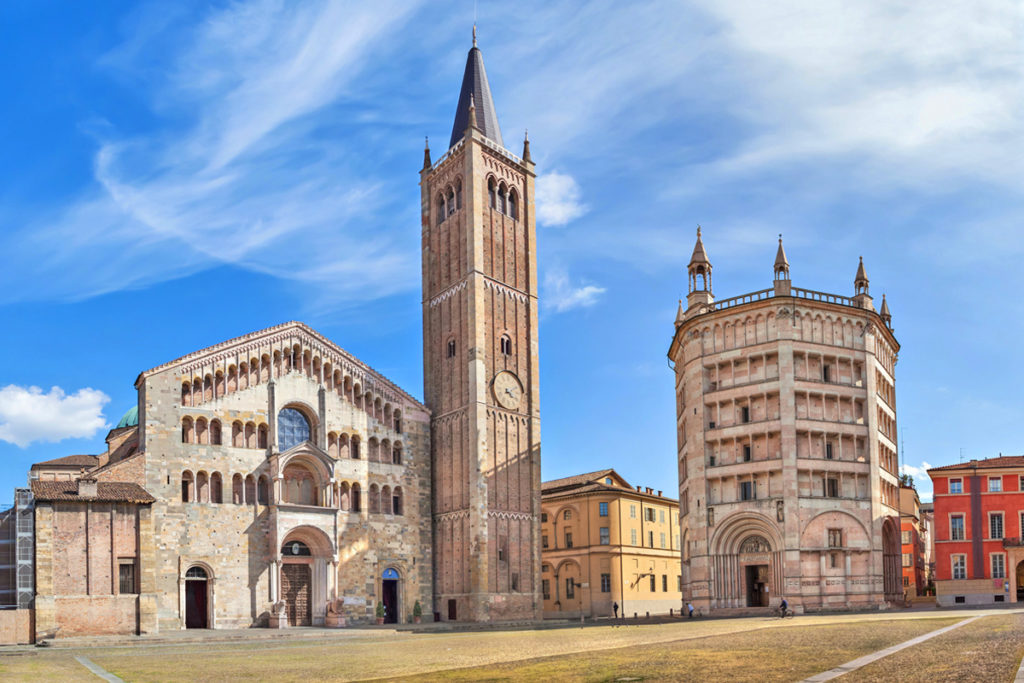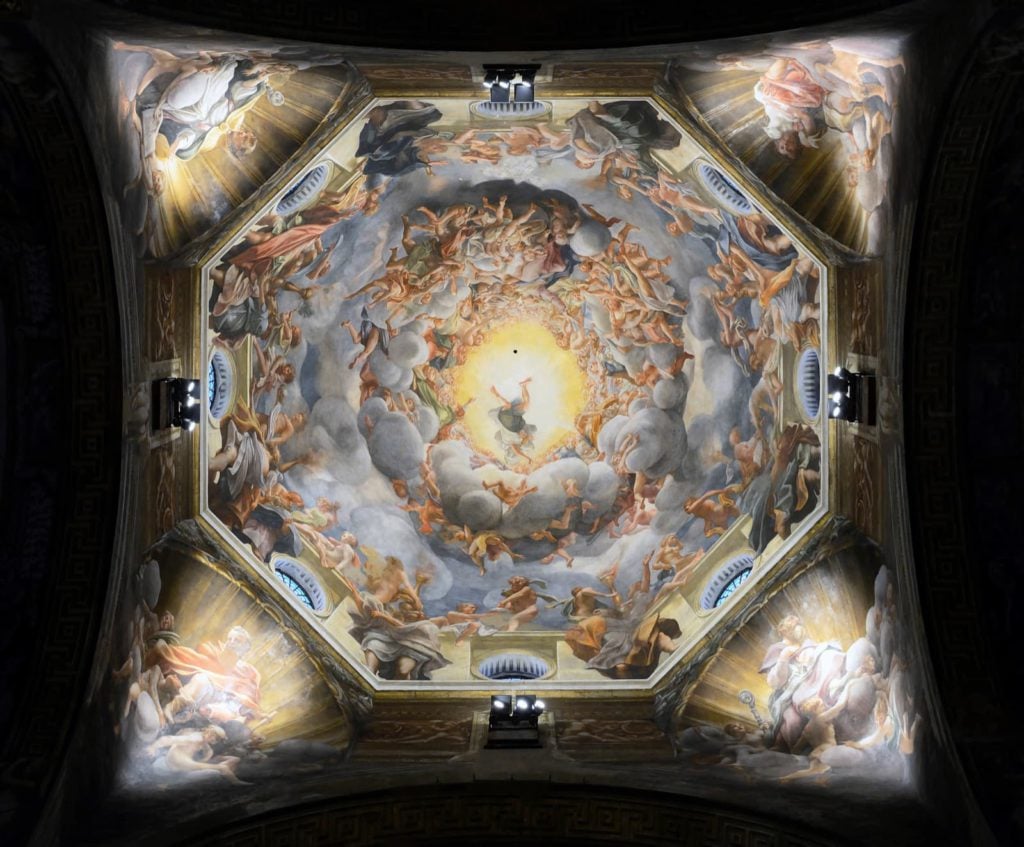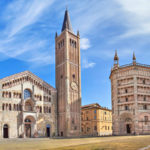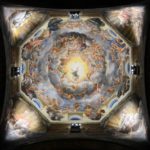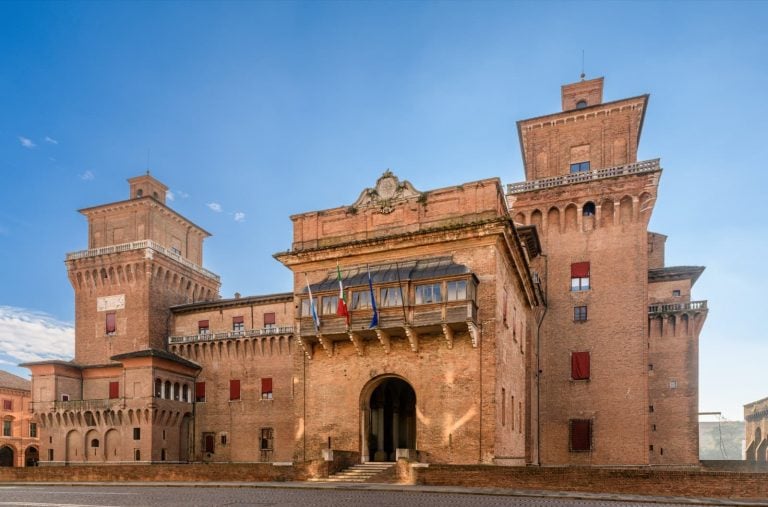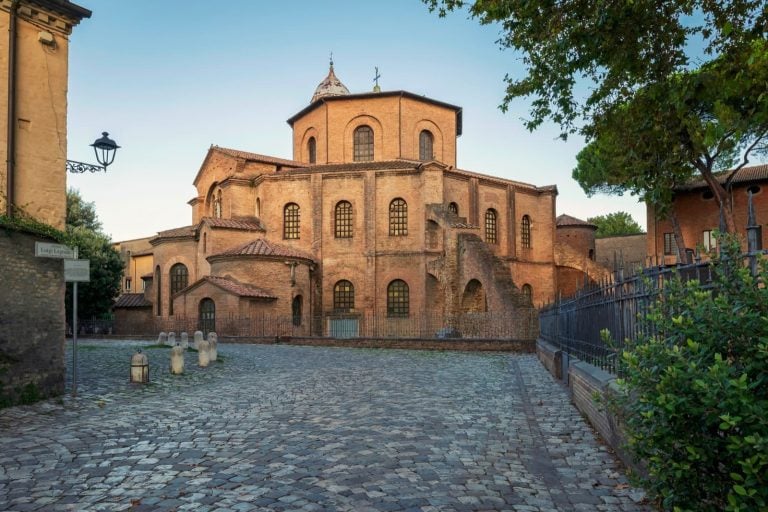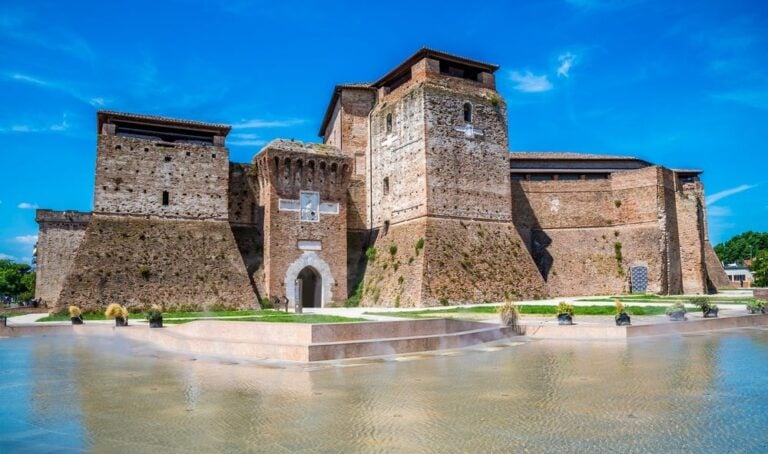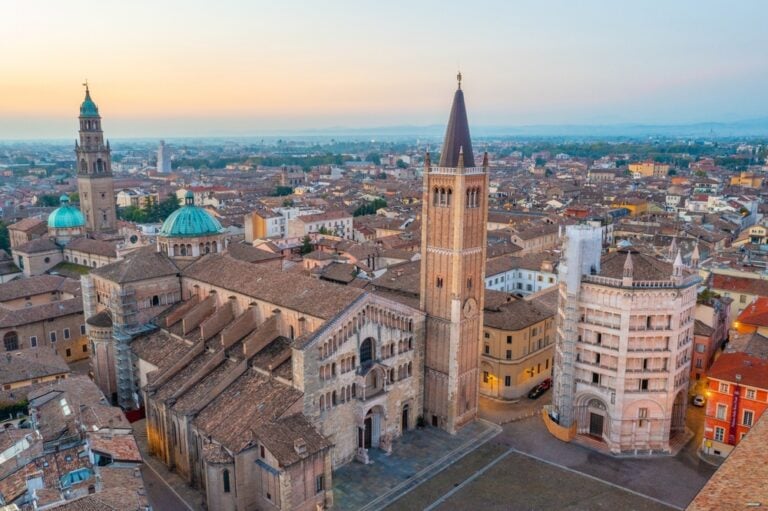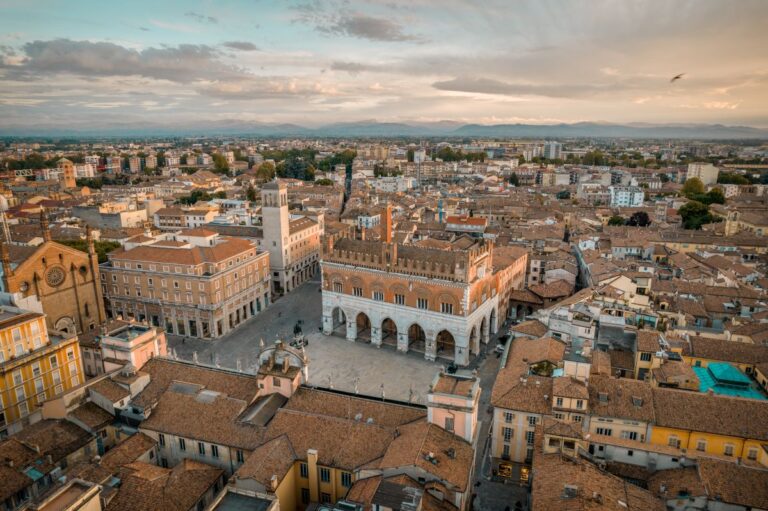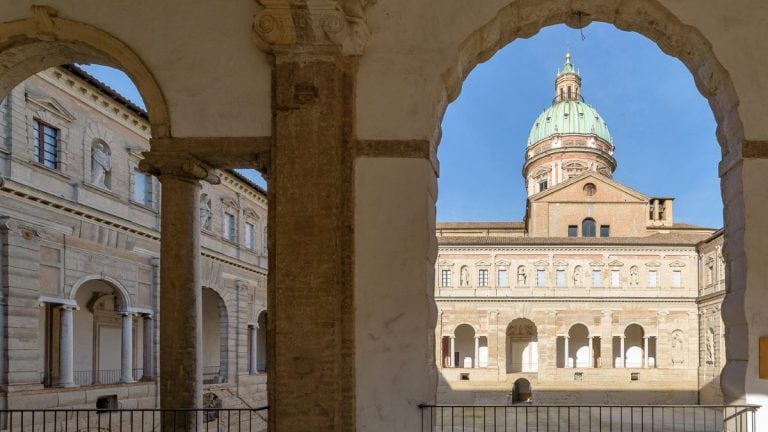Very Italian (who doesn’t know Prosciutto di Parma ham and Parmesan cheese?), but also strongly influenced by French culture, Parma is the charming and refined heart of Emilia. The ‘petit Paris’, as it is sometimes called, is a little paradise for lovers of history, art and music, enclosed within an easily walkable city centre.
This is where the masterpieces of artists such as Correggio and Parmigianino are to be found; the famous conductor Arturo Toscanini was born here and the maestro Giuseppe Verdi grew up a short distance away; it was here that the Duchess Maria Luigia of Austria, Napoleon’s second wife lived for many years, and her memory still echoes in the streets of the city.
For those who haven’t been there yet or would like to discover it better, we recommend following us on this 10-stage walk through the Ducal City between the centre and the Oltretorrente district.
1. Ducal Park
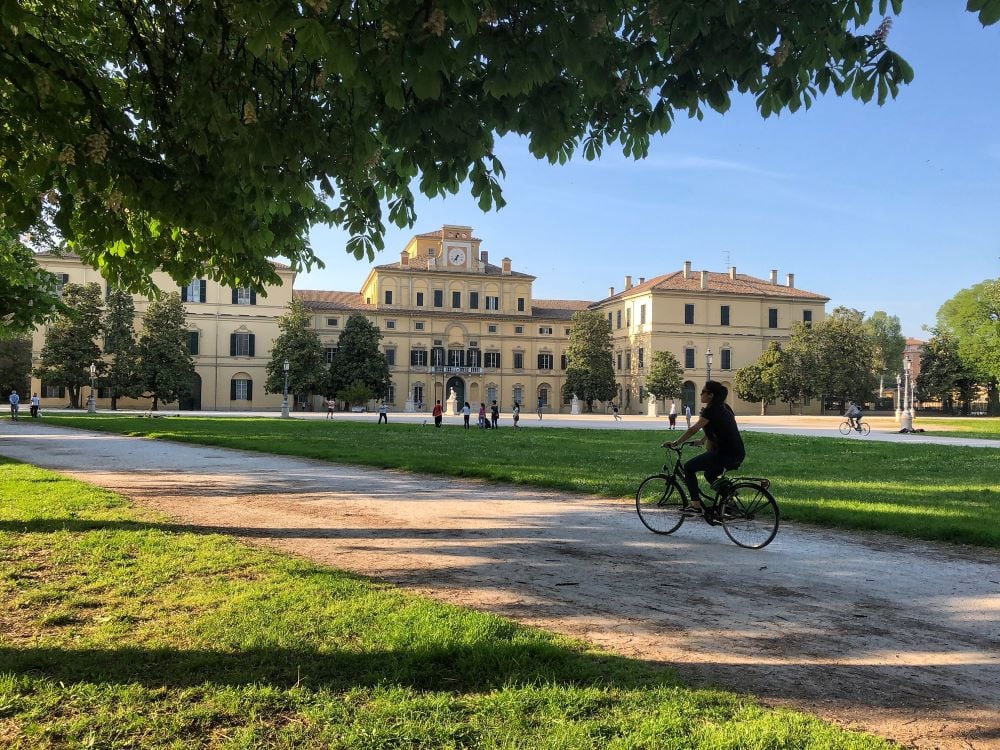
The transalpine influences on the city’s history are visible right from the first stop on our Parma itinerary, the Parco Ducale park. This large green area – its surface covers almost a quarter of the city centre – opens up before us as soon as we cross the bridge over the Parma Torrent, which divides the heart of the city from the Oltretorrente district.
Built in the mid-sixteenth century at the behest of Ottavio Farnese, over the centuries the Park has changed its shape several times. One of the most important redevelopment projects was undoubtedly the one commissioned by the Bourbons in the mid-eighteenth century, who entrusted French architects and artists such as Petitot and Boudard. In 1866 it was finally opened to the public.
Much frequented by Parmesans, the park still retains its neoclassical layout featuring a large central boulevard leading from the étoile to the fish pond and its monumental fountain, as well as a large group of statues. At the entrance to the gardens, to the side of the étoile, stands the old Ducal Palace, a 16th-century building designed by architect Vignola that houses numerous frescoes.
2. Arturo Toscanini Birthplace and Museum
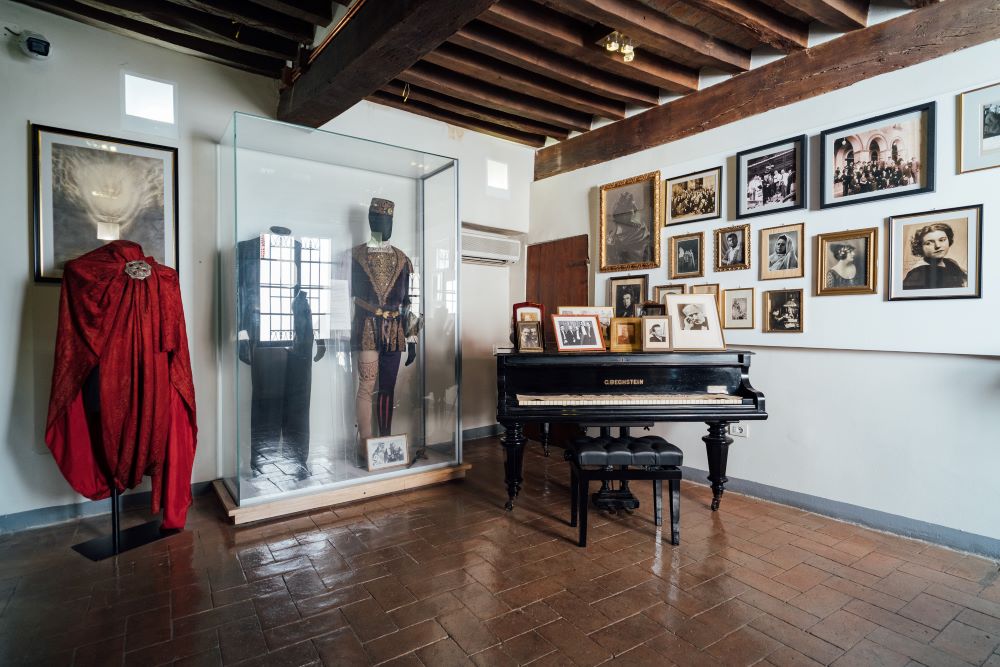
Let’s stay on the other side of the river to enter the birthplace of the great conductor Arturo Toscanini, turned into a museum in 1967 on the centenary of his birth.
Located a few steps away from the Parco Ducale, the Birthplace and Museum of Arturo Toscanini is a true journey through time and a must-see destination for classical music enthusiasts. Wandering through the rooms where Toscanini spent his childhood is a way to get closer to his world, but also a first evidence of the close relationship between music and the city.
Inside you will find various objects and memorabilia from the houses where Toscanini lived, as well as historical documents and posters of the time.
3. Pilotta Monumental Complex
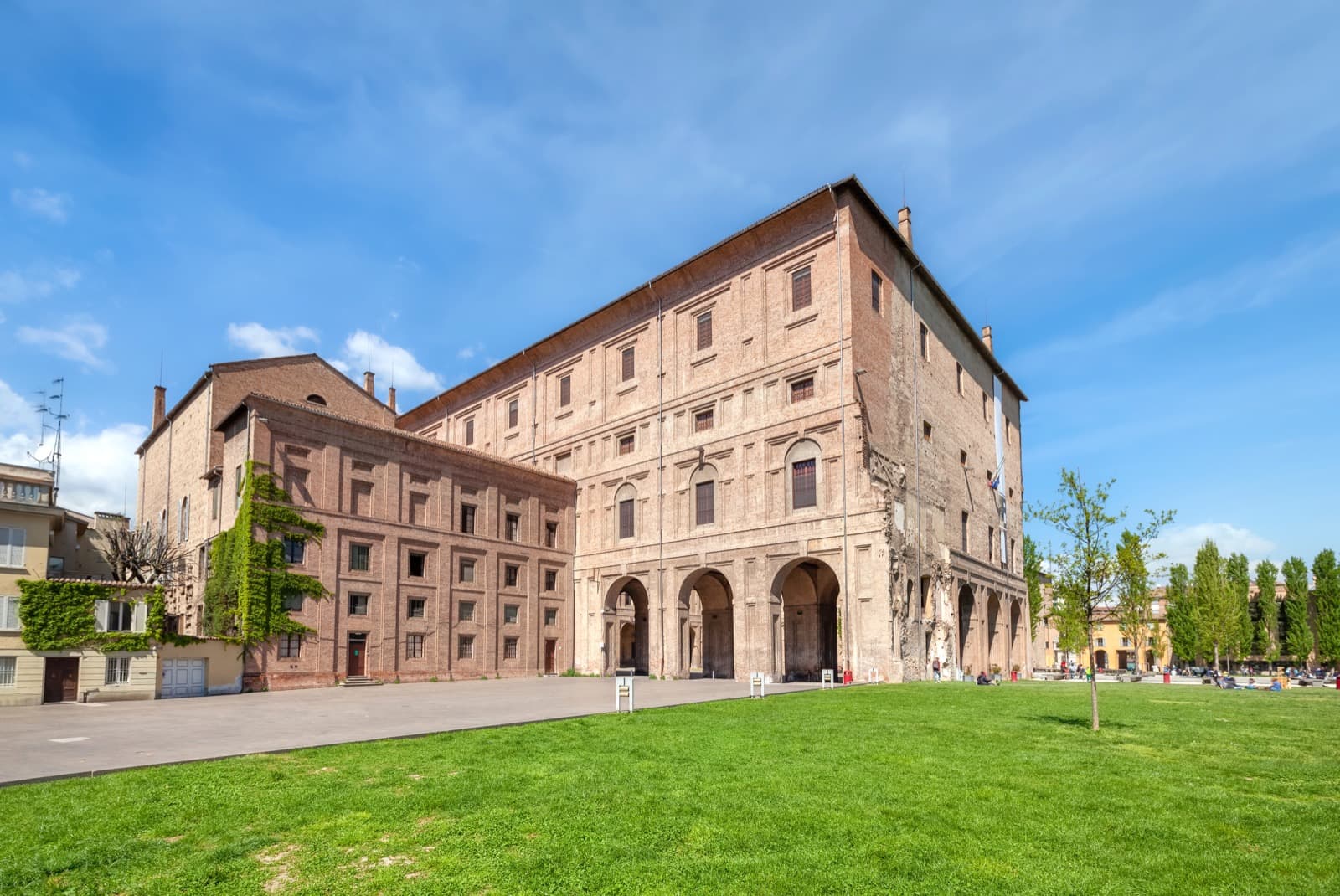
The Pilotta palace certainly does not go unnoticed. It is no coincidence that this imposing building in the city centre is referred to as a ‘monumental complex’, and to visit it you need to carve out no less than a few hours.
The foundation stone was laid in 1580, under the Farnese family. Originally, the palace was to house the numerous service rooms that were used for the Farnese court (the stables, the storerooms, the coach house, to name but a few). With the rise of the Bourbon dynasty in the 18th century, the Pilotta was instead transformed into an important cultural centre for both the court and the city, a role it has maintained to this day.
It now houses museums and other cultural venues such as the National Gallery of Parma, the Farnese Theatre, the National Archaeological Museum, the Palatine Library and the Bodoni Museum.
4. National Gallery
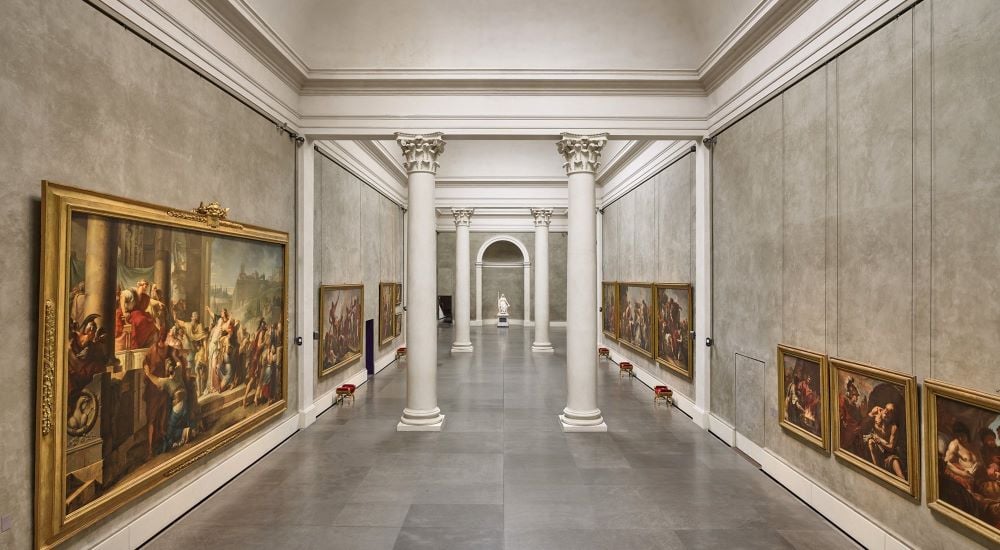
Let us now enter the Complex of the Pilotta to visit two places that cannot be missed when visiting the city. The first is the National Gallery, a vast collection of works that took shape after the foundation of the Academy of Fine Arts by the Bourbons in the mid-18th century. It subsequently became a public gallery thanks to the intervention of Maria Luigia of Austria, Duchess of Parma from 1816 to 1847, who also helped to enlarge it.
Today the Gallery includes works dating from the Middle Ages to the 19th century, with highlights such as Leonardo’s Scapigliata, Parmigianino’s Turkish Slave and Canova’s statue of Maria Luigia, as well as significant works by Correggio and many other artists.
5. Farnese Theatre
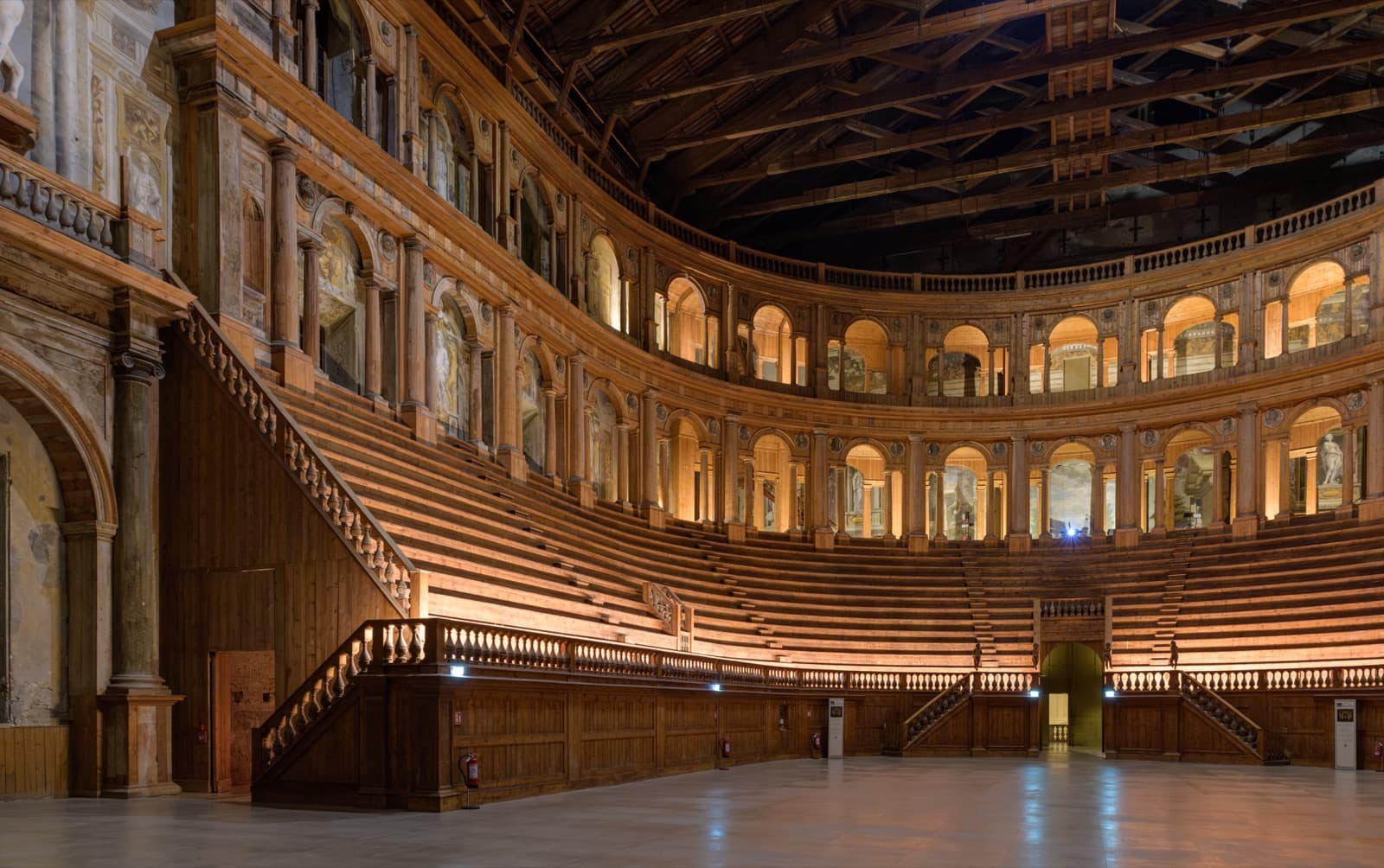
The second place inside the Pilotta we’d like to focus on is the Teatro Farnese, an extraordinary wooden theatre commissioned by Ranuccio I Farnese and inaugurated in 1628 with a performance that even included flooding of the stalls. Over the centuries, the theatre was gradually abandoned; the coup de grace came in 1829, when Duchess Maria Luigia had the new Teatro Ducale (today’s Teatro Regio) built, thus relegating the Farnese to oblivion.
Although the theatre we admire today is the result of a post-war reconstruction (it was in fact bombed in 1944), it still represents an extraordinary testimony to 17th-century theatre architecture. The hall that houses it – horseshoe-shaped and surmounted by two orders of serlianas – is so large that it could seat up to 3,000 people, and was originally covered with painted stucco imitating marble decorations.
6. Basilica Santa Maria della Steccata
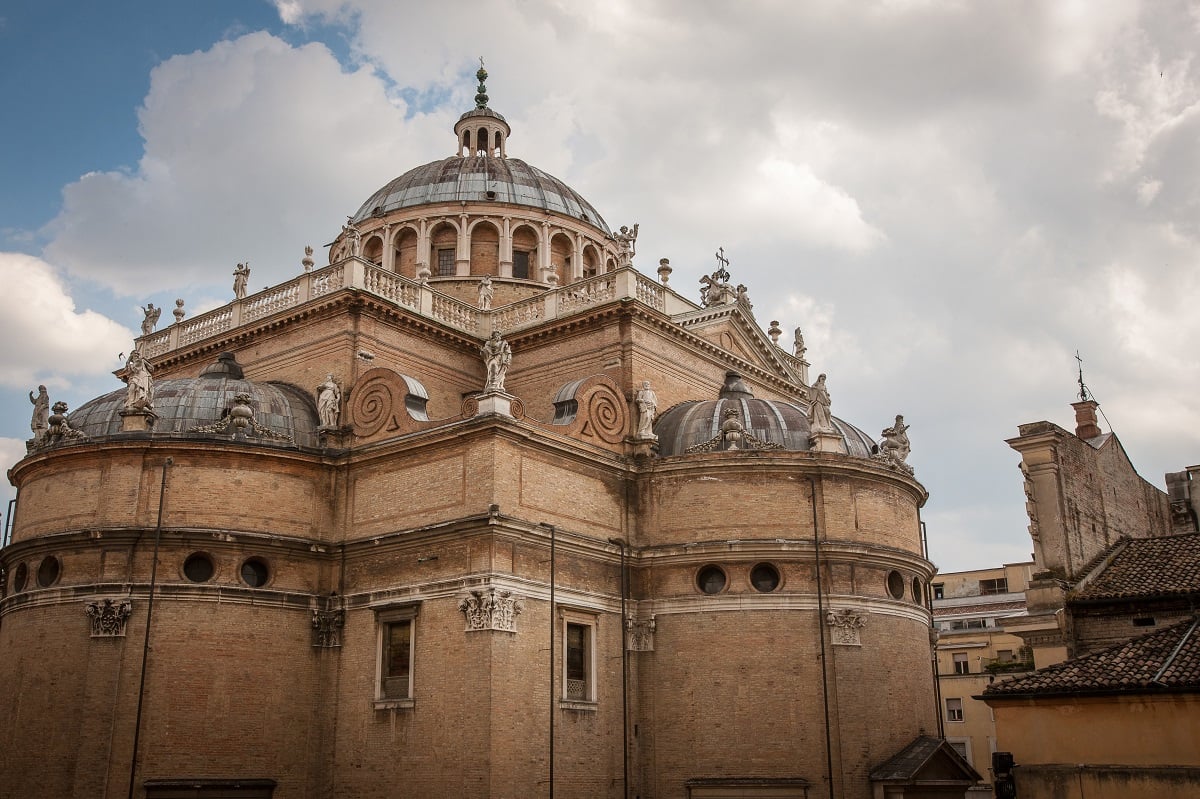
Let’s follow our tour of Parma’s attractions with a stop at the Basilica Santa Maria della Steccata. The church owes its unusual name to an anecdote. Before the church was built, in this place there was a painting much loved by the people of Parma, depicting the Madonna in the act of suckling the Baby Jesus. To regulate the ‘traffic’ of devotees, which grew in number as time passed, it was then decided to protect the painting with a fence. When the basilica was built in 1521, it therefore seemed only natural to call it ‘della Steccata’ (steccato meaning “of the fence”).
Anyone visiting it today will find themselves in the presence of a Renaissance-style structure in the shape of a Greek cross that houses the last work by Parmigianino, ‘The wise virgins and the foolish virgins’, painted in the undercroft of the high altar.
7. Cathedral of Parma
Let’s now head to the heart of the city, Piazza Duomo, to admire the Cathedral of Santa Maria Assunta, built in 1106. Clear and bright, the cathedral’s façade is made of sandstone blocks and is a perfect example of the Romanesque style, easily recognisable by its gabled roof.
Once inside, we are faced with a three-nave structure, enriched by various sculptural decorations such as the Deposition by Benedetto Antelami. However, the highlight of the church are the frescoes in the dome, painted by Correggio between 1525 and 1530: a true masterpiece, denoting incredible illusionistic skills. The subject represented is the Assumption of the Virgin who appears in the clouds surrounded by a swirl of Apostles, ephebes and angels.
In the cathedral of Parma, Correggio also painted the apostles on the tambour of the dome, the saints on the pendentives and the six monochrome figures at the ends of the sub-arches.
8. Parma's Baptistery
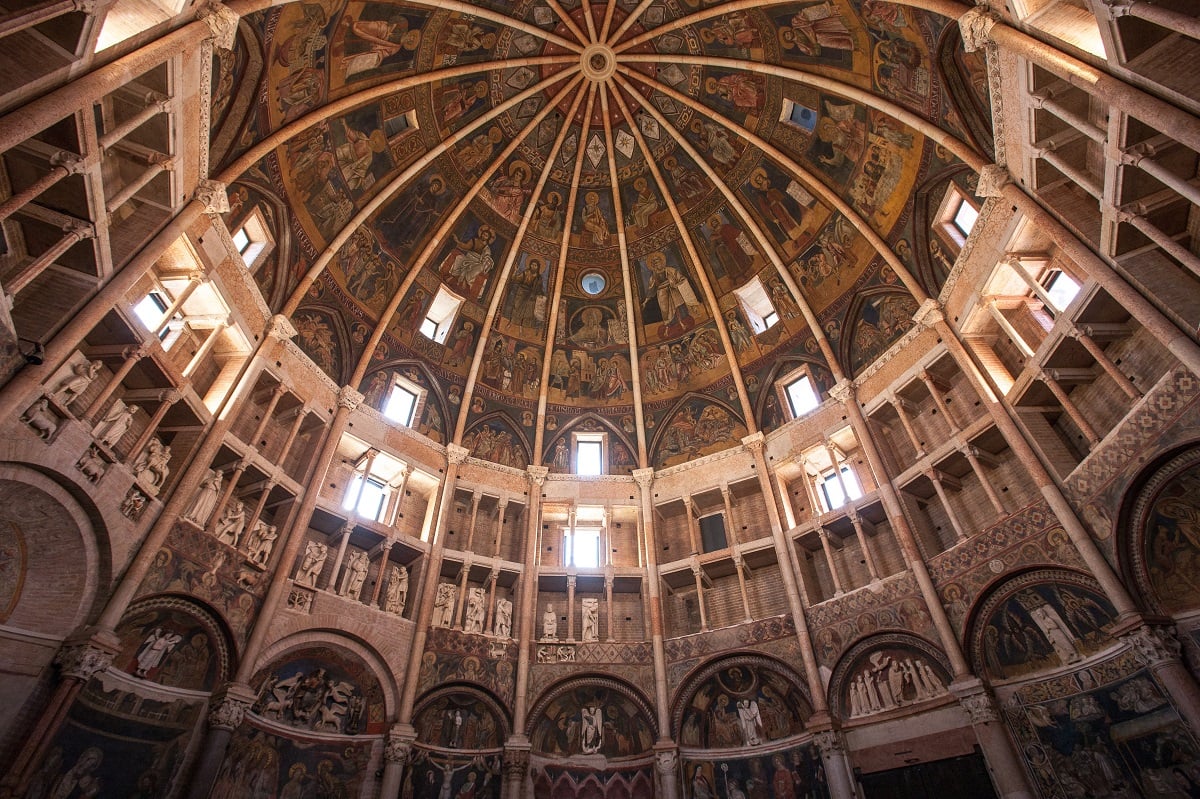
Right next to Parma Cathedral is the Baptistery of St John the Baptist. At first glance, the octagonal building catches the eye for the warm hue of its pink Verona marble cladding, as well as for its elegance mixing late Romanesque with Gothic influences.
The Baptistery is in fact more recent than the cathedral. Its construction began in 1196 to a design by Benedetto Antelami, and was completed in the early 14th century. Antelami is also responsible for the entire sculptural decoration of the building, including the statues of the months and seasons located inside. Moving our gaze from the baptismal font in the centre of the building towards the dome, we can observe the 13th-century frescoes of the vault with biblical episodes painted by Lombard masters.
9. Chamber of Saint Paul and Saint Catherine's cell
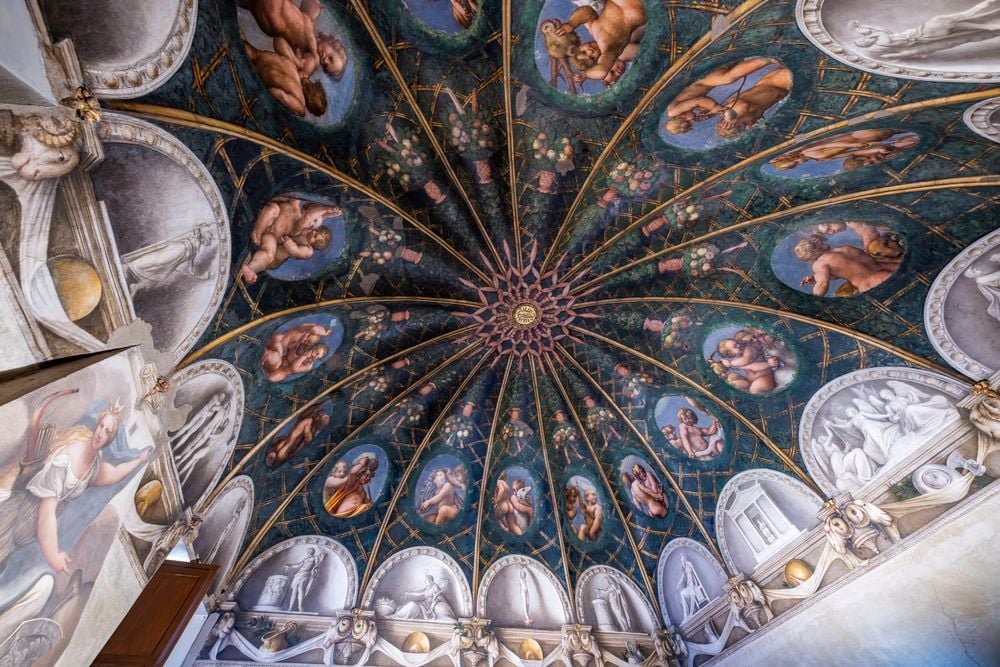
The first example of Correggio‘s successful work in Parma is located in a more intimate setting compared to the city’s major religious buildings. It is the Camera di San Paolo or della Badessa, located in the former Benedictine monastery of St. Paul. The marvellous frescoed vault was commissioned to the artist in 1519 by the Abbess Giovanna da Piacenza, who wished to decorate her private rooms. Actually, you can see two frescoed vaults today: the first (and oldest) was painted in the adjoining room, known as the Cella di Santa Caterina, by the painter Alessandro Araldi.
But it’s Correggio’s vault that captures the visitors’ full attention. The artist from Reggio Emilia has opened up the narrow space of the chamber by recreating an astonishing pergola full of vegetation, playing with the trompe l’oeil effect. Small groups of playful putti peep out from oval openings in the blue sky, among leaves, fruit and festoons framed by the ribs of the vault. The work is completed with the underlying lunettes and their painted statues.
10. Church of San Giovanni Evangelista
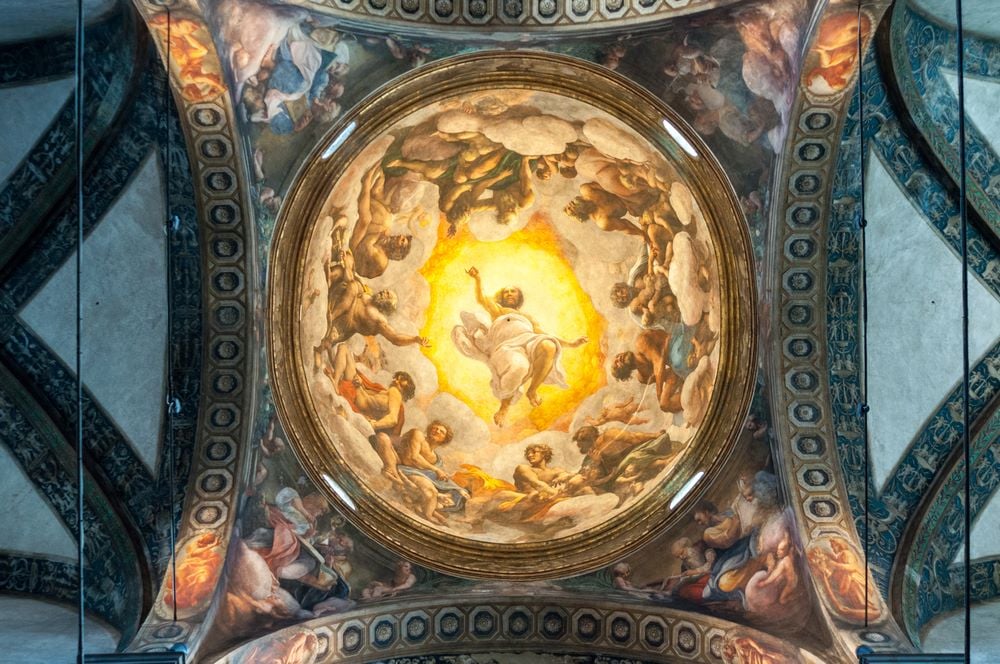
Let us end our city tour at the Church of San Giovanni Evangelista, certainly not the last place to see in Parma, but one of the most interesting ones. We could see the church as the end point of our journey in the footsteps of Correggio. In fact, much of the pictorial decoration of the interior is owed to the artist from Reggio Emilia.
The Baroque façade leads to the interior of a Latin-crossed, three-aisled space that holds some noteworthy treasures. Correggio worked on the decoration of San Giovanni Evangelista soon after the commission for the Camera della Badessa, but shortly before the frescoes in the Duomo, precisely in 1520. In addition to the pictorial frieze running along the inner perimeter of the church, the lunette with St. John and the eagle and other works that are no longer on site, the artist was called upon to paint the dome with the scene of the Ascension of Christ.
Author

Maria Grazia Masotti
An eternal dreamer, but I try to stay grounded. I was raised in the countryside but I love big cities. I’m always ready for a trip, as long as it’s sustainable.
You may also like
Ravenna on foot, what to see in a 10-stage tour
by Davide Marino /// February 13, 2025
Rimini on foot, what to see in a 10-stage tour
by Maria Grazia Masotti /// February 21, 2025

Interested in our newsletter?
Every first of the month, an email (in Italian) with selected contents and upcoming events.
Parma on foot, what to see in a 10-stage tour
by Maria Grazia Masotti /// March 5, 2025
Piacenza on foot, what to see in a 10-stage tour
by Maria Grazia Masotti /// January 17, 2025
